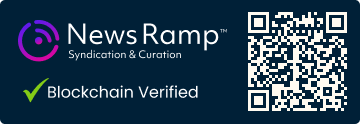Website Accessibility: A Strategic Cost-Cutting Approach for Businesses
March 26th, 2025 7:00 AM
By: HRmarketer Editorial
New research from WSI Your Digital Success reveals how website accessibility can generate significant cost savings across multiple business domains, including revenue generation, customer support, legal risk mitigation, and operational efficiency.
Digital transformation strategies are increasingly recognizing website accessibility as a critical component of organizational efficiency and financial optimization. Recent insights from digital marketing experts suggest that implementing comprehensive web accessibility measures can yield substantial economic benefits across various operational dimensions.
The financial implications of digital accessibility are profound, particularly when considering the substantial purchasing power of individuals with disabilities. This demographic represents 20% of the population and commands $13 trillion in disposable income, presenting a significant untapped market opportunity for businesses willing to invest in inclusive digital experiences.
Comprehensive accessibility improvements can drive revenue growth through multiple channels. Organizations implementing these strategies may experience conversion rate increases up to 20%, enhanced search engine optimization performance, and expanded market reach. These outcomes directly translate into improved financial performance and competitive advantage.
Customer support cost reduction represents another substantial benefit of website accessibility. By creating more intuitive, navigable digital platforms, businesses can potentially decrease support-related expenses by approximately 20%. This reduction stems from enabling users with diverse abilities to interact more independently with digital interfaces, thereby minimizing required assistance.
Legal risk mitigation emerges as a critical financial consideration. With Americans with Disabilities Act (ADA) website accessibility lawsuits frequently resulting in settlements ranging from $5,000 to $50,000—and potentially exceeding $100,000 in complex cases—proactive accessibility measures represent a prudent financial strategy.
Technical infrastructure benefits further underscore the economic rationale. Websites designed with Web Content Accessibility Guidelines (WCAG) compliance typically feature more streamlined, structured code. This approach not only facilitates easier maintenance but also reduces long-term technological overhead and potential retrofitting expenses.
Notably, certain jurisdictions offer financial incentives to support accessibility initiatives. In the United States, tax deduction programs like the Disabled Access Credit can help offset implementation costs, providing additional financial motivation for organizations to prioritize digital inclusivity.
As digital technologies continue evolving rapidly, accessibility is emerging not merely as a compliance requirement but as a strategic imperative. By viewing web accessibility through a comprehensive economic lens, organizations can simultaneously enhance user experience, expand market reach, and optimize operational efficiency.
Source Statement
This news article relied primarily on a press release disributed by 24-7 Press Release. You can read the source press release here,
